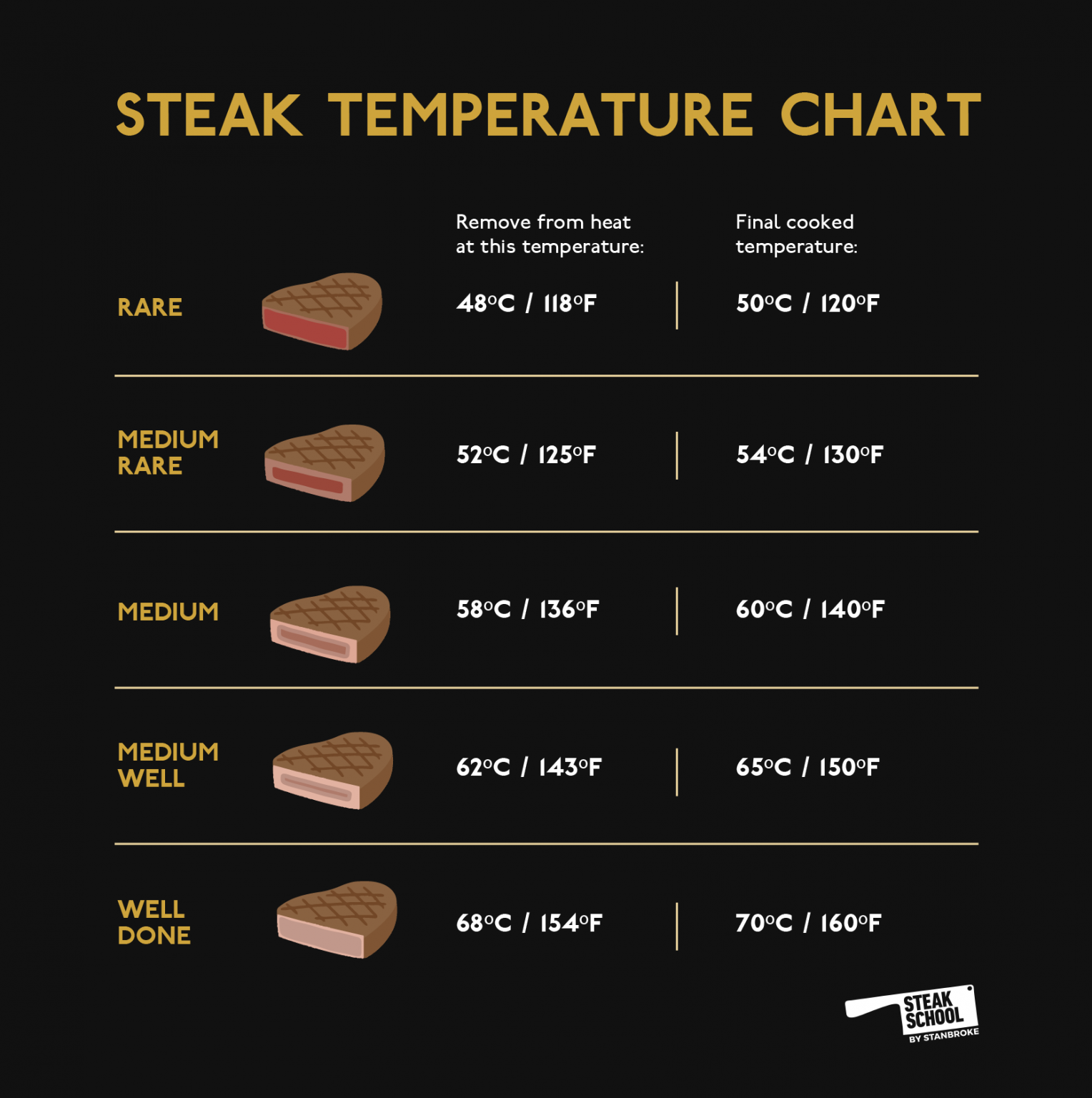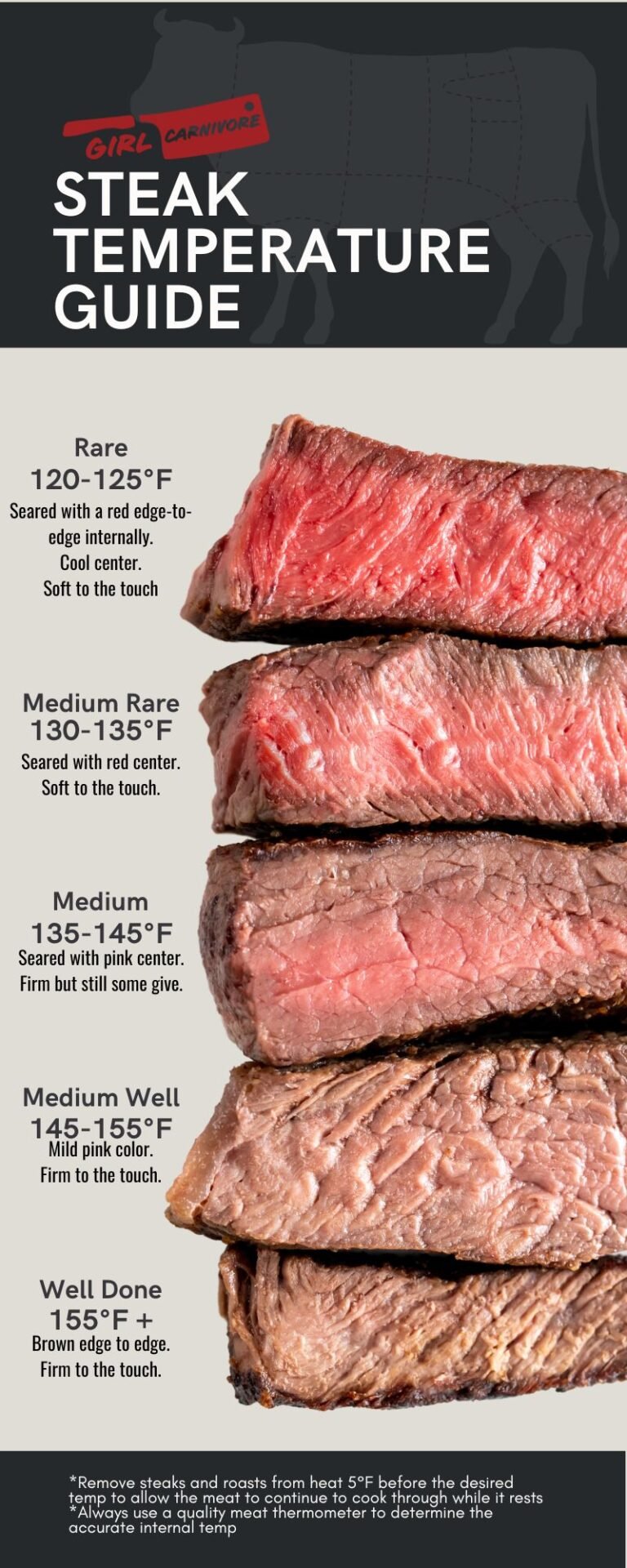Let’s face it, steak lovers—there’s nothing quite like sinking your teeth into a perfectly cooked piece of meat. Whether you’re grilling at home or dining at a fancy restaurant, knowing the steak temp guide is your golden ticket to steak perfection. But let’s be real, not everyone knows the difference between rare, medium-rare, and well-done. That’s where this guide comes in, stepping up your steak game like a pro chef in your own kitchen.
Now, I get it—you might be thinking, “Why does temperature even matter when it comes to steak?” Well, buckle up because the temp of your steak can make or break the entire experience. Too raw, and you’re risking a foodie fail. Too overcooked, and you’re left with a dry, flavorless hunk of meat. Finding that sweet spot? That’s what this guide is all about.
From the juiciest cuts to the exact temps you need to hit, we’re diving deep into the world of steak cooking. So grab your apron, fire up the grill, and let’s get ready to turn you into the ultimate steak whisperer. Let’s do this!
Read also:Eternals 2 Cast The Ultimate Guide To The Celestial Superstars
Table of Contents
- Why Temp Matters for Steak
- Understanding Steak Doneness Levels
- Using a Meat Thermometer Like a Pro
- The Importance of Resting Your Steak
- Best Cooking Methods for Steak
- Different Cuts of Steak and Their Ideal Temps
- Common Mistakes to Avoid
- Tips for Achieving Perfect Steak
- The Ultimate Steak Temp Chart
- Wrapping It Up
Why Temp Matters for Steak
Okay, so here’s the deal: temperature is basically the secret sauce when it comes to cooking steak. You can have the fanciest cut of meat, but if you don’t hit the right temp, all that effort goes down the drain. Think about it—would you rather bite into a juicy, tender steak or something that tastes like leather? Yeah, didn’t think so.
Temperature affects everything from the texture to the flavor. When you cook a steak, the proteins inside start to break down and the fat begins to render. If you go too high, you end up with a tough, dry piece of meat. Too low, and you’re left with something that’s undercooked and unsafe to eat. Finding that perfect balance? That’s what separates the amateurs from the steak masters.
How Temperature Impacts Flavor
Let’s break it down a little further. Different temps bring out different flavors in your steak. For example, a rare steak retains more of its natural juices, giving it that rich, beefy flavor. On the flip side, a well-done steak has more of a roasted, caramelized taste because the sugars in the meat have had time to caramelize. It’s all about knowing what you like and hitting that temp just right.
And hey, let’s not forget about food safety. Cooking your steak to the right temp ensures that any harmful bacteria are killed off, keeping you and your dinner guests safe and happy. It’s a win-win, right?
Understanding Steak Doneness Levels
Alright, let’s talk doneness levels because this is where the magic happens. From rare to well-done, each level has its own unique appeal. But what does it all mean? Let’s break it down:
- Rare: That’s around 120-125°F. The center is super red, and the texture is soft and squishy. Perfect for those who love their steak with a little kick of rawness.
- Medium-Rare: This is the sweet spot for most steak lovers—130-135°F. You’ve got a nice pink center, juicy texture, and that perfect balance of flavor.
- Medium: We’re talking 140-145°F here. The pink is fading, but there’s still some moisture left. Great for those who want a little more cooked but not too dry.
- Medium-Well: At 150-155°F, the pink is almost gone, and the steak is starting to firm up. Still flavorful, but not as juicy as the lower temps.
- Well-Done: If you like your steak fully cooked, aim for 160°F or higher. It’s firm, dry, and lacks that juicy goodness, but hey, to each their own.
Knowing these levels is key to mastering your steak game. Whether you’re a fan of rare or well-done, understanding the temps will help you achieve that perfect steak every time.
Read also:Anjali Arora Mms Xxx Hd
Using a Meat Thermometer Like a Pro
Now, here’s the thing—guessing the temp of your steak is a recipe for disaster. That’s why every serious steak enthusiast needs a meat thermometer. It’s like the GPS for your grill, guiding you to steak perfection every single time.
Here’s how to use one like a pro:
- Insert the thermometer into the thickest part of the steak, avoiding any fat or bone.
- Wait for the reading to stabilize. Most thermometers will beep or flash when they’re done.
- Compare the temp to your desired doneness level. Remember, the temp will continue to rise a bit after you remove the steak from the heat, so pull it a few degrees early.
Investing in a good thermometer is one of the best things you can do for your cooking game. Trust me, once you try it, you’ll never go back to guessing again.
Types of Meat Thermometers
Not all thermometers are created equal. Here are a few options to consider:
- Instant-Read Thermometers: These babies give you a reading in seconds, making them perfect for quick checks.
- Leave-In Thermometers: Great for slow-cooking or roasting, these stay in the meat and give you a constant temp readout.
- Thermal Probes: For the tech-savvy grillers, these connect to your phone or tablet, giving you real-time updates on your steak’s temp.
The Importance of Resting Your Steak
Here’s a tip that too many people overlook: let your steak rest before digging in. Why? Because when you cook a steak, all those juices get pushed to the center. If you cut into it too soon, all that goodness is going to spill out onto your plate. Nobody wants that.
Resting allows the juices to redistribute throughout the steak, keeping it juicy and flavorful. Just cover it with foil and let it sit for about 5-10 minutes. Trust me, the wait is worth it.
How Long Should You Rest Your Steak?
It depends on the size and thickness of your steak. A general rule of thumb is to rest it for about 5 minutes for every inch of thickness. So, if you’ve got a thick-cut ribeye, give it a good 10 minutes to settle down before you take that first bite.
Best Cooking Methods for Steak
Now, let’s talk methods. There are a ton of ways to cook a steak, but some are better than others. Here are a few of the best:
- Grilling: The classic method for outdoor cooking. High heat sears the outside while keeping the inside juicy.
- Pan-Seared: Perfect for indoor cooking, this method gives you that beautiful crust while keeping the inside tender.
- Oven-Baked: Great for thicker cuts, this method allows you to cook the steak evenly without overcooking the outside.
Each method has its own benefits, so it’s all about finding what works best for you and your steak.
Tips for Grilling Steak
Grilling is a favorite for many, so here are a few tips to make sure you’re doing it right:
- Preheat your grill to high heat before adding the steak.
- Use tongs instead of a fork to flip your steak—no one wants all those juices escaping.
- Let the steak sit on the grill for a few minutes before flipping to get those nice grill marks.
Different Cuts of Steak and Their Ideal Temps
Not all steaks are created equal, and each cut has its own ideal temp. Here’s a quick rundown:
- Ribeye: Best at medium-rare to medium temps (130-145°F).
- Filet Mignon: Go for medium-rare to medium (130-140°F) to keep it tender.
- New York Strip: A little more forgiving, aim for medium to medium-well (140-150°F).
- Sirloin: Cook to medium (140-145°F) for the best flavor and texture.
Knowing the ideal temp for each cut will help you tailor your cooking method to the specific steak you’re working with.
Why Cuts Matter
Different cuts have different fat contents and textures, which means they cook differently. A ribeye, for example, has a lot of marbling, so it can handle higher temps without drying out. On the other hand, a filet mignon is leaner, so it needs to be cooked at a lower temp to keep it tender.
Common Mistakes to Avoid
Even the best steak chefs make mistakes sometimes. Here are a few common ones to watch out for:
- Not Letting the Steak Rest: We already talked about this, but it’s worth repeating. Resting is key to a juicy steak.
- Overcooking: It’s easy to get carried away, but overcooked steak is a sad, sad thing. Stick to your temp guide and pull the steak when it’s ready.
- Flipping Too Much: Constantly flipping your steak can prevent it from developing that beautiful crust. Let it sit for a bit before flipping.
Avoid these pitfalls, and you’ll be well on your way to steak greatness.
Tips for Achieving Perfect Steak
Here are a few extra tips to take your steak game to the next level:
- Season Liberally: Salt and pepper are your best friends here. Don’t be shy—season your steak generously before cooking.
- Use High-Quality Meat: Start with a great cut of meat, and you’re already halfway there.
- Let It Come to Room Temp: Take your steak out of the fridge about 30 minutes before cooking. This helps it cook more evenly.
These little tricks can make a big difference in the final result. Trust me, your taste buds will thank you.
The Ultimate Steak Temp Chart
Here’s a quick reference chart to help you nail those temps every time:
| Doneness Level | Internal Temp (°F) | Texture |
|---|---|---|
| Rare | 120-125 | Soft and squishy, red center |
| Medium-Rare | 130-135 | Pink center, juicy and tender |
| Medium | 140-145 | Fading pink, firmer |



